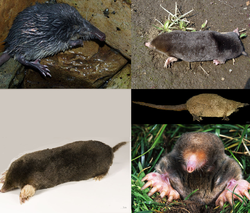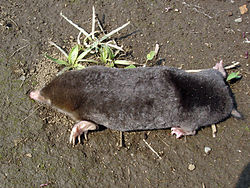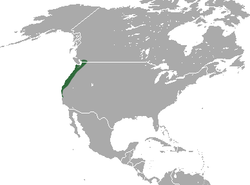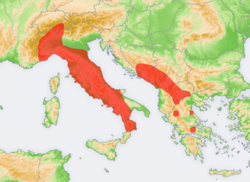
Talpidae is one of the four families of small mammals in the order Eulipotyphla. A member of this family is called a talpid and the family includes moles, shrew moles, and desmans. Talpids are found in North America, Europe, and Asia, primarily in forests, shrublands, grasslands, and wetlands, though some species can also be found in deserts or coastal areas. They range in size from the Chinese shrew mole, at 6 cm (2 in) plus a 5 cm (2 in) tail, to the Russian desman, at 22 cm (9 in) plus a 22 cm (9 in) tail. Talpids primarily eat earthworms, insects, and other invertebrates, but some also consume fish, mollusks, amphibians, crustaceans, plants, and fungi. No talpids have population estimates, but the Pyrenean desman and Echigo mole are categorized as endangered species, while the Russian desman is categorized as critically endangered.
Contents
- Conventions
- Classification
- Talpids
- Subfamily Scalopinae
- Subfamily Talpinae
- Subfamily Uropsilinae
- References
- Sources
The forty-five extant species of Talpidae are divided into three subfamilies: Scalopinae, containing seven mole species in five genera, Talpinae, containing thirty-three mole, shrew mole, and desman species in eleven genera, and Uropsilinae, containing four shrew mole species in a single genus. A few extinct prehistoric Talpidae species have been discovered, though due to ongoing research and discoveries the exact number and categorization is not fixed. [1]






































































